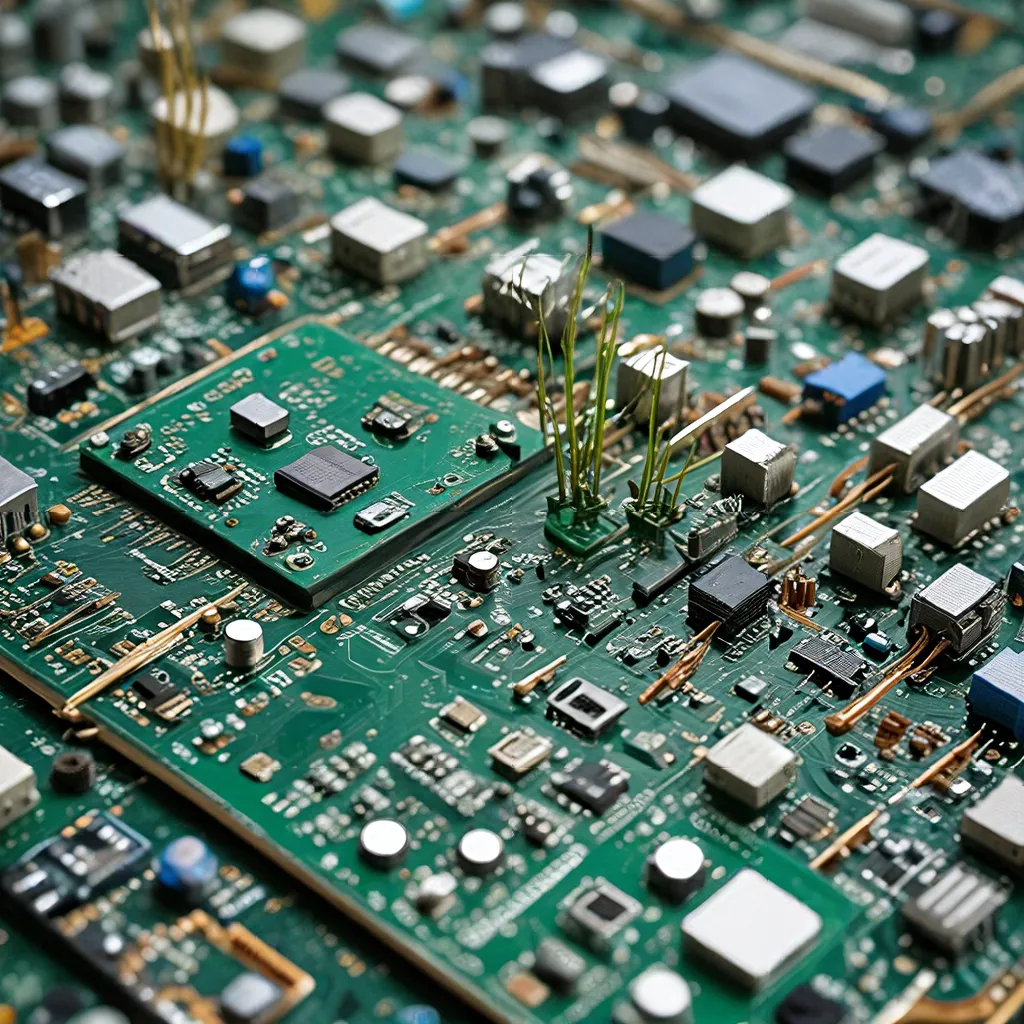
Powering the Future, One Electron at a Time
Imagine a world where our electronic devices didn’t rely on batteries prone to depletion and disposal nightmares. A world where our smartphones, smart speakers, and fitness trackers could sip energy straight from the ambient light around us, like a plant basking in the sun. Well, my friends, that world is closer than you might think.
The Trouble with Batteries
As our homes, offices, and public spaces become smarter and more connected, the demand for power-hungry devices has skyrocketed. We’re surrounded by a sea of gadgets, each with its own battery that needs constant recharging or replacement. And let’s not forget the environmental toll – those batteries often contain toxic chemicals and rare earth elements that are difficult to recycle.
Researchers at Imperial College London, Soochow University, and the University of Cambridge have been working on a solution that could revolutionize how we power our smart devices. They’ve discovered a class of eco-friendly materials that can harvest energy from the very indoor lighting we use every day.
The Power of Perovskites
These cutting-edge materials are called “perovskite-inspired” – a nod to the perovskite crystals that have been making waves in the solar energy industry. Perovskites are known for their impressive light-to-electricity conversion efficiency, but they have one major flaw: they contain toxic lead.
Enter the perovskite-inspired materials. By swapping out the lead for safer elements like bismuth and antimony, these new materials have become much more environmentally friendly. And get this – they’re actually better at absorbing the specific wavelengths of light found in our homes and offices than their lead-based counterparts.
“By efficiently absorbing the light coming from lamps commonly found in homes and buildings, the materials can turn light into electricity with an efficiency already in the range of commercial technologies,” explains Dr. Robert Hoye from the Department of Materials at Imperial College London.
Powering the Future, Sustainably
Now, I know what you’re thinking: “But how much power can these materials really generate?” Well, my friends, the researchers have already demonstrated that the power provided by these materials under indoor illumination is sufficient to operate electronic circuits. Imagine a world where your smart devices could charge themselves, without the need for pesky power cords or battery replacements.
“Our discovery opens up a whole new direction in the search for green, easy-to-make materials to sustainably power our smart devices,” says Professor Vincenzo Pecunia from Soochow University.
But the benefits don’t stop there. These perovskite-inspired materials could also be processed onto unconventional substrates, like plastics and fabrics, opening up the possibility for a whole new generation of wearable, battery-free devices. Imagine a fitness tracker that never needs to be charged, or a smart shirt that powers your music without the bulk of a battery pack.
Trash to Treasure: Mining the Rare Earth Elements
As if the eco-friendly nature of these materials wasn’t enough, researchers have also found a way to extract rare earth elements from electronic waste – the very components that power our devices. According to the Oak Ridge National Laboratory, these valuable materials can be recovered from discarded electronics, reducing the need for mining and processing of virgin ore.
Imagine the possibilities: a closed-loop system where our old devices are transformed into the building blocks for the next generation of sustainable electronics. It’s a true “trash to treasure” scenario, and it could have far-reaching implications for the future of our planet.
The Future is Bright (and Energy-Efficient)
As I reflect on all of these exciting developments, I can’t help but feel a sense of optimism for the future of our energy-hungry world. With the advent of these eco-friendly, light-harvesting materials, we’re on the cusp of a new era of sustainable electronics that could revolutionize the way we power our lives.
So, the next time you reach for your smartphone or strap on your fitness tracker, remember that the future of energy-efficient electronics is being forged in the very elements that surround us. It’s time to embrace the power of the elements and start saving energy with Plug ‘n Save – one electron at a time.